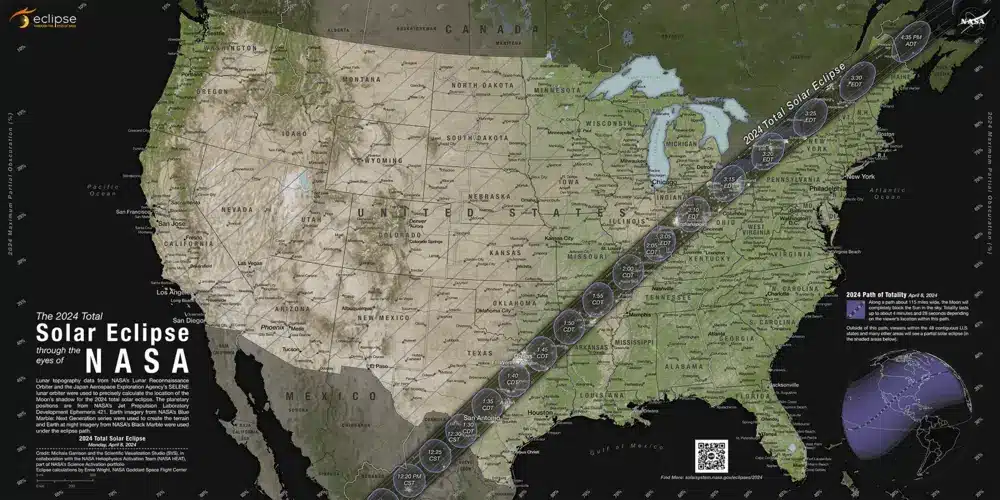Planning for the American Total Solar Eclipse on April 8, 2024
Mark your calendars for Monday, April 8, because it will be the last total solar eclipse visible from the contiguous United States until 2044. A total solar eclipse happens when the Moon passes between the Sun and the Earth, completely blocking the face of the Sun. The sky will darken as if it were dawn or dusk. This is one of those rare events that you and your family will not want to miss.
If you’re interested in learning about the event, I have highlighted some key information here. Thanks to John Aviste for contributing to this article. John is an engineer with a deep enthusiasm for space, and he also runs summer STEM programs in the Boston area through his organization, Edge on Science. In John’s space-focused camp, Space Science, students can explore astronomy and model solar and lunar eclipses. I would encourage you to read John’s in-depth article about the upcoming eclipse on his blog, in which he goes into detail about the shadow cast by the Moon and what you can expect to see!

Safety First!
A word of caution: never directly view the Sun, even if the Moon partially blocks the Sun. If you do, the Sun’s rays will cause permanent eye damage. It is not safe to look directly at the Sun without specialized eye protection for solar viewing. Read NASA’s safety guidelines and be sure to protect your eyes during the eclipse.
Best Places to See the Eclipse
To see the path of the 2024 eclipse, NASA has released a new map that shows where the Moon’s shadow will cross the U.S. I asked John what parts of the US will experience the effects of the eclipse. He noted that the NASA map highlights the path of totality, the shadow entering Texas and heading in a northeasterly direction. It is from this path that the Moon completely blocks the Sun. If practical, you would want to be on this path and in a part of the country where the skies are likely to be clear. Otherwise, everyone in the lower 48 states will witness a partial solar eclipse where the Moon partly obscures our nearest star. All ablazing!
Plan Your Viewing
Check out NASA’s Eclipse Explorer, an interactive map designed to enhance your eclipse-viewing experience down to the zip code level! With this map, you can learn what will be visible in different areas, see a prediction of the corona, compare this path to previous eclipses, and more.
Here are some planning tips to keep in mind:
- Have a safe and permissible place from which to watch the eclipse
- If you are traveling to watch the eclipse, arrive a day early
- Pay attention to the weather
- If there is a high probability that it will be overcast, have a plan to relocate
- Order your eclipse glasses now
Find an Eclipse Event
Use NASA’s event list to find in-person and virtual NASA-related events you can participate in before or during the eclipses. Check your local community news and organizations like state parks and museums to see what other events might be hosted in your area. For example, Vermont Public has compiled a list of some really neat events in Vermont that are in the path of totality.
Finally, to learn more, visit NASA’s 2024 Total Solar Eclipse website. It’s chock-full of interesting information about the eclipse and other science topics NASA covers.
Image Credit: NASA’s Scientific Visualization Studio







